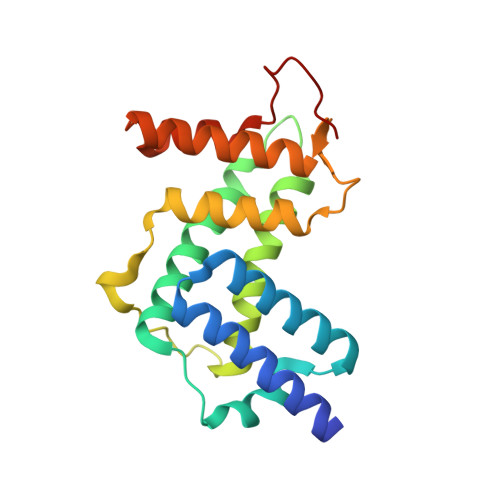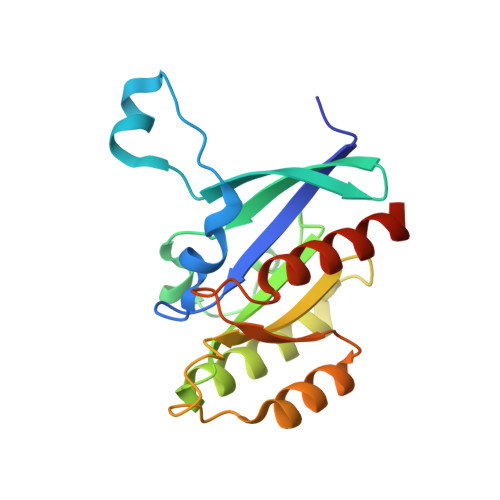Proximity-Triggered Covalent Stabilization of Low-Affinity Protein Complexes In Vitro and In Vivo.
Cigler, M., Muller, T.G., Horn-Ghetko, D., von Wrisberg, M.K., Fottner, M., Goody, R.S., Itzen, A., Muller, M.P., Lang, K.(2017) Angew Chem Int Ed Engl 56: 15737-15741
- PubMed: 28960788
- DOI: https://doi.org/10.1002/anie.201706927
- Primary Citation of Related Structures:
5O74 - PubMed Abstract:
The characterization of low-affinity protein complexes is challenging due to their dynamic nature. Here, we present a method to stabilize transient protein complexes in vivo by generating a covalent and conformationally flexible bridge between the interaction partners. A highly active pyrrolysyl tRNA synthetase mutant directs the incorporation of unnatural amino acids bearing bromoalkyl moieties (BrCnK) into proteins. We demonstrate for the first time that low-affinity protein complexes between BrCnK-containing proteins and their binding partners can be stabilized in vivo in bacterial and mammalian cells. Using this approach, we determined the crystal structure of a transient GDP-bound complex between a small G-protein and its nucleotide exchange factor. We envision that this approach will prove valuable as a general tool for validating and characterizing protein-protein interactions in vitro and in vivo.
Organizational Affiliation:
Center for Integrated Protein Science Munich (CIPSM), Department of Chemistry, Group of Synthetic Biochemistry, Technical University of Munich, Institute for Advanced Study, Lichtenbergstr. 4, 85748, Garching, Germany.
















